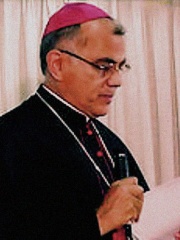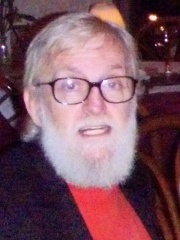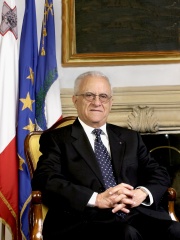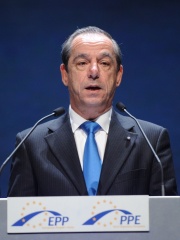RELIGIOUS FIGURE
Paul Cremona
1946 - Today

 Paul Cremona
Paul Cremona
Paul Cremona OP (Maltese: Pawl Cremona; 25 January 1946 – 18 March 2025) was a Maltese Roman Catholic prelate who was the Archbishop of Malta from 2007 to 2014. He was also a Dominican friar. Read more on Wikipedia
His biography is available in 16 different languages on Wikipedia. Paul Cremona is the 2,089th most popular religious figure (up from 2,939th in 2024), the 20th most popular biography from Malta (up from 39th in 2019) and the 4th most popular Maltese Religious Figure.
Memorability Metrics
Page views of Paul Cremona by language
Among RELIGIOUS FIGURES
Among religious figures, Paul Cremona ranks 2,089 out of 3,187. Before him are Laura Montoya, Benedict Biscop, Qadi Iyad, Eugenio Dal Corso, Laurent-Joseph-Marius Imbert, and Eduardo Francisco Pironio. After him are Berthold, Carlos Aguiar Retes, Baltazar Enrique Porras Cardozo, August Hlond, Shelah, and Maria Restituta Kafka.
Most Popular Religious Figures in Wikipedia
Go to all RankingsLaura Montoya
1874 - 1949
HPI: 60.26
Rank: 2,083
Benedict Biscop
628 - 690
HPI: 60.25
Rank: 2,084
Qadi Iyad
1083 - 1149
HPI: 60.25
Rank: 2,085
Eugenio Dal Corso
1939 - 2024
HPI: 60.25
Rank: 2,086
Laurent-Joseph-Marius Imbert
1796 - 1839
HPI: 60.25
Rank: 2,087
Eduardo Francisco Pironio
1920 - 1998
HPI: 60.25
Rank: 2,088
Paul Cremona
1946 - Present
HPI: 60.25
Rank: 2,089
Berthold
1180 - 1251
HPI: 60.25
Rank: 2,090
Carlos Aguiar Retes
1950 - Present
HPI: 60.24
Rank: 2,091
Baltazar Enrique Porras Cardozo
1944 - Present
HPI: 60.23
Rank: 2,092
August Hlond
1881 - 1948
HPI: 60.22
Rank: 2,093
Shelah
HPI: 60.21
Rank: 2,094
Maria Restituta Kafka
1894 - 1943
HPI: 60.21
Rank: 2,095
Contemporaries
Among people born in 1946, Paul Cremona ranks 313. Before him are Dan O'Bannon, Allan Holdsworth, Abdul Ali Mazari, Ratomir Dujković, Hanan Ashrawi, and Jüri Tarmak. After him are Jane Asher, Dick van Dijk, Richard Carpenter, Kiril Ivkov, Óscar Berger, and Vazgen Manukyan.
Others Born in 1946
Go to all RankingsDan O'Bannon
FILM DIRECTOR
1946 - 2009
HPI: 60.42
Rank: 307
Allan Holdsworth
MUSICIAN
1946 - 2017
HPI: 60.42
Rank: 308
Abdul Ali Mazari
POLITICIAN
1946 - 1995
HPI: 60.41
Rank: 309
Ratomir Dujković
SOCCER PLAYER
1946 - Present
HPI: 60.40
Rank: 310
Hanan Ashrawi
SOCIAL ACTIVIST
1946 - Present
HPI: 60.33
Rank: 311
Jüri Tarmak
ATHLETE
1946 - 2022
HPI: 60.30
Rank: 312
Paul Cremona
RELIGIOUS FIGURE
1946 - Present
HPI: 60.25
Rank: 313
Jane Asher
ACTOR
1946 - Present
HPI: 60.24
Rank: 314
Dick van Dijk
SOCCER PLAYER
1946 - 1997
HPI: 60.21
Rank: 315
Richard Carpenter
SINGER
1946 - Present
HPI: 60.21
Rank: 316
Kiril Ivkov
SOCCER PLAYER
1946 - 2025
HPI: 60.21
Rank: 317
Óscar Berger
POLITICIAN
1946 - Present
HPI: 60.20
Rank: 318
Vazgen Manukyan
POLITICIAN
1946 - Present
HPI: 60.20
Rank: 319
In Malta
Among people born in Malta, Paul Cremona ranks 20 out of 71. Before him are Anthony Mamo (1909), Eddie Fenech Adami (1934), Maria de Dominici (1645), Nicolas Isouard (1775), Saint-George Ashe (1871), and George Borg Olivier (1911). After him are Dom Mintoff (1916), Lawrence Gonzi (1953), Daphne Caruana Galizia (1964), Ċensu Tabone (1913), Girolamo Cassar (1520), and Melchiorre Cafà (1636).
Others born in Malta
Go to all RankingsAnthony Mamo
POLITICIAN
1909 - 2008
HPI: 61.90
Rank: 14
Eddie Fenech Adami
POLITICIAN
1934 - Present
HPI: 61.40
Rank: 15
Maria de Dominici
PAINTER
1645 - 1703
HPI: 60.82
Rank: 16
Nicolas Isouard
COMPOSER
1775 - 1818
HPI: 60.75
Rank: 17
Saint-George Ashe
ATHLETE
1871 - 1922
HPI: 60.59
Rank: 18
George Borg Olivier
POLITICIAN
1911 - 1980
HPI: 60.58
Rank: 19
Paul Cremona
RELIGIOUS FIGURE
1946 - Present
HPI: 60.25
Rank: 20
Dom Mintoff
POLITICIAN
1916 - 2012
HPI: 60.18
Rank: 21
Lawrence Gonzi
POLITICIAN
1953 - Present
HPI: 60.06
Rank: 22
Daphne Caruana Galizia
JOURNALIST
1964 - 2017
HPI: 58.77
Rank: 23
Ċensu Tabone
POLITICIAN
1913 - 2012
HPI: 58.71
Rank: 24
Girolamo Cassar
ARCHITECT
1520 - 1592
HPI: 58.58
Rank: 25
Melchiorre Cafà
SCULPTOR
1636 - 1667
HPI: 57.93
Rank: 26
Among RELIGIOUS FIGURES In Malta
Among religious figures born in Malta, Paul Cremona ranks 4. Before him are Mario Grech (1957), Saint Publius (100), and Prosper Grech (1925). After him are George Preca (1880), and Antoine Camilleri (1965).
Mario Grech
1957 - Present
HPI: 64.97
Rank: 1
Saint Publius
100 - 112
HPI: 64.40
Rank: 2
Prosper Grech
1925 - 2019
HPI: 62.98
Rank: 3
Paul Cremona
1946 - Present
HPI: 60.25
Rank: 4
George Preca
1880 - 1962
HPI: 56.15
Rank: 5
Antoine Camilleri
1965 - Present
HPI: 46.92
Rank: 6









































